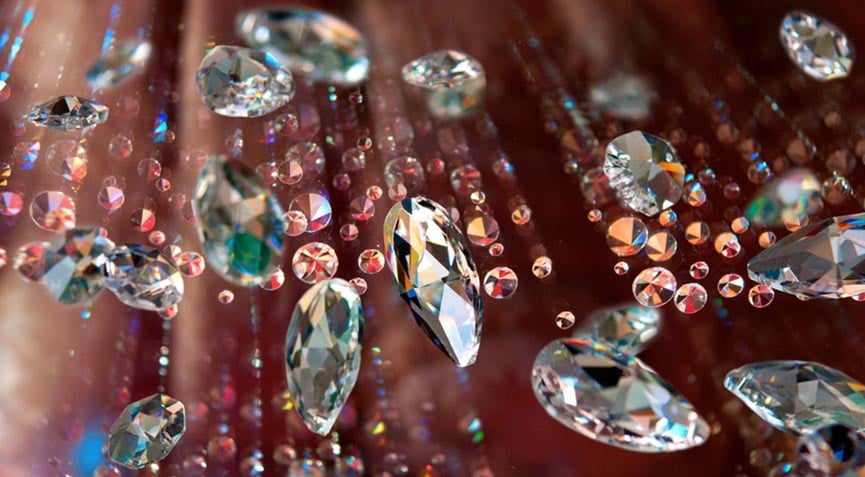Fire, Brilliance, & What it Really Means to Be a ‘Cut’ Above the Rest
When speaking of diamond jewellery – rings in particular – you often hear things like “princess cut” or “emerald cut.” But as we discussed in our post a few weeks back, princess, emerald, pear, etc. are shapes. “Cut” in the world of diamonds, is something else entirely. And that something is super important to your diamond’s value.
It’s a matter of depth. Cut too shallow, or too deep, and the diamond’s refractive index will be less than ideal – literally, as we’ll cover in a moment. First, let’s get back to that rather scientific-sounding term: refractive index.
All that means is how much light is reflected back from the surface of the diamond. It’s determined by assessing the following:

Brilliance is characterised as the way light reflects back to the viewer. Think about the way light reflects back from a mirror – versus the way it bounces off a disco ball – and you get a sense of what brilliance is all about.
Fire describes the colours seen in the little flashes of light given by a diamond – especially in low light, like that of a candle. The angles – or facets – of the diamond’s cut surface split white light into the colours of the spectrum.
Scintillation refers to the way a diamond sparkles as it moves. Depending on the lighting source, you may have lots of black and white sparkles, and/or fiery colours flashing off the surface of your diamond ring, for example.
With a well-cut diamond, there will be a combination of the features above – it’s what puts the “bling” in your bling! But there are a couple other factors that contribute to loss of brilliance, fire or scintillation:
Polish refers to the smoothness of the facets. When the polish is subpar diamonds can look dull or dirty – certainly not what you’re going for.
Symmetry is just as it sounds – how evenly the facets line up. If they’re uneven, the light entering and exiting the diamond will be misdirected, and throw off the sparkle in the ways discussed above.
PUTTING IT ALL TOGETHER
Because there are so many minute details that factor into the equation, there are several grades of diamond cuts:
- Ideal
- Excellent
- Very Good
- Good
- Fair
- Poor
Obviously if you’re making an investment in a diamond, you want the absolute highest quality you can get – which is an Ideal cut gem. Though they are the most expensive, they do provide the best sparkle.
And this is why taking carat size as the sole measure of a quality diamond is a mistake. A larger carat stone with a shallow cut may actually be less valuable than a smaller weight stone with an Ideal cut.
When determining the value of diamond jewellery, all the facets must align – so to speak. When they do, there’s nothing more dazzling or precious – especially if there’s a promise of eternal love attached.
Speaking of eternal love, have you entered our #EternityProposal contest? Your proposal picture or video could win you a gorgeous diamond eternity ring! Enter here today!




